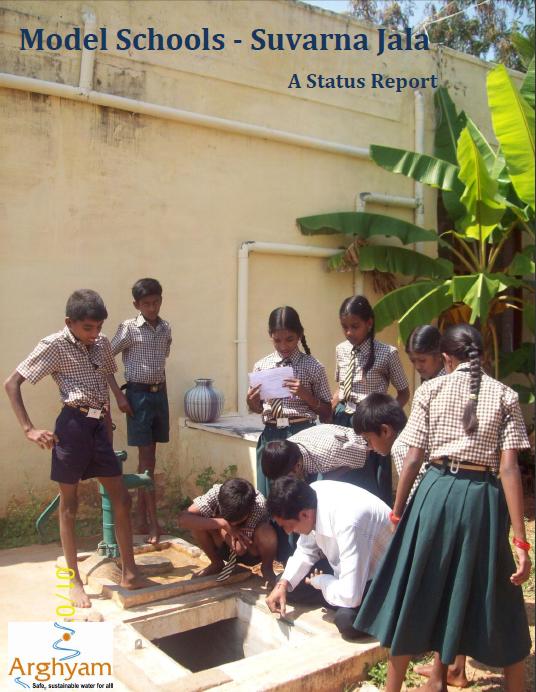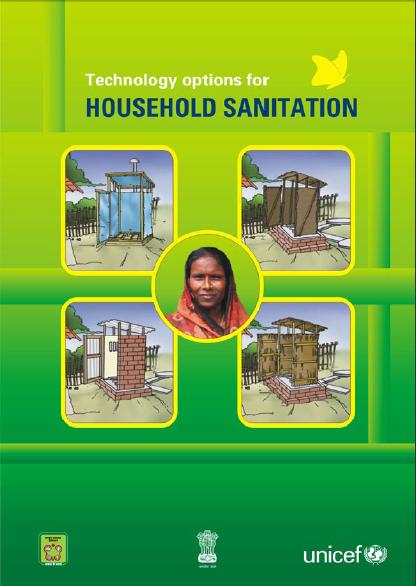Sanitation
New and improved WSSCC website
Posted on 22 Nov, 2014 10:30 AMArticle and Image Courtesy: Water supply and Sanitation Collaborative Council

We are pleased to announce the new and improved, your entry point into the online world of the Water Supply and Sanitation Collaborative Council.
News roundup 815 November 2010 India proposes a new emission check system and News roundup on the floods
Posted on 22 Nov, 2014 10:30 AMClimate Change
Environment
Evaluation of sanitation and wastewater treatment technologies: Case studies from India
Posted on 22 Nov, 2014 10:30 AMThe sanitation systems studied are spread across the country. The study goes to Pratapnagar in Bihar to evaluate the success of the septic tank to Asalthpur in Uttar Pradesh to study the Ecosan (UDDT) toilet. Other locations in India include Maharashtra, Gujarat, Kerala.
Model Schools: Suvarna Jala - A status report by Arghyam 2009
Posted on 22 Nov, 2014 10:30 AM This is a status report of Arghyam's sponsored efforts to develop and showcase community managed water and sanitation systems in 17 schools of 7 districts of Karnataka.
This is a status report of Arghyam's sponsored efforts to develop and showcase community managed water and sanitation systems in 17 schools of 7 districts of Karnataka.
The Government of Karnataka through its Suvarna Jala Yojana aims at providing drinking water in 23,683 rural government schools. This was funded to the tune of Rs 7735 lakh. Arghyam conducted a survey of this scheme in 2007 in 7 districts to ascertain the status of the scheme. The survey found out that out of the 1269 rainwater harvesting structures completed by November 2006 only 140 structures were functional.{C}
Technology options for household sanitation : A report by the Ministry of Rural Development and UNICEF
Posted on 22 Nov, 2014 10:30 AM As part of the Total Sanitation Campaign (TSC), the Ministry of Rural Development under the Rajiv Gandhi National Drinking Water Mission and UNICEF have brought out a compedium that details the various sanitation technologies available to above and below poverty line households .
As part of the Total Sanitation Campaign (TSC), the Ministry of Rural Development under the Rajiv Gandhi National Drinking Water Mission and UNICEF have brought out a compedium that details the various sanitation technologies available to above and below poverty line households .
The authors have divided the report into three subjects - the first being the need for household sanitation and the extent of the problem in rural India. The second section looks at sanitation technology in general with a focus on rural areas and technologies for different conditions. The third part deals with operation and maintenance of such technologies and includes a chapter on components of a toilet.
Status of water supply sanitation and solid waste management in urban areas: A research study by CPHEEO 2005
Posted on 22 Nov, 2014 10:30 AMThis study by the Central Public Health and Environmental Engineering Organisation (CPHEEO) assesses the status of water supply, sanitation and solid waste management in selected 300 cities and towns of India including all metropolitan cities and selected Class I and Class II urban centres. It estimates the requirement of funds for full coverage of population by these services in the urban areas of the country from 1999 to 2022 (at five yearly intervals). Overall, the study confirms the normal notion that the metropolitan cities are better provided for than the other size class of urban centres.
News roundup 22 31 October 2010 India Land of many cell phones but fewer toilets
Posted on 22 Nov, 2014 10:30 AMWastewater/Sanitation
Launching Samajik Parivartan Yatra
Posted on 22 Nov, 2014 10:30 AMManual scavenging is the most obnoxious and inhuman practice violating the dignity and human personhood of safai karmacharis. It involves the engagement or employment of sections of people to manually dispose human excreta from dry latrines with bare minimum aids such as scrappers, brooms and baskets.
Manual scavenging is integrally linked with caste system and is imposed on certain dalit sub-caste groups particularly on their women. As a result all persons engaged in manual scavenging are dalits, and of them 82% are women.
Samajik Parivartan Yatra updates 7th October 2010 Community meeting held in Valmiki Mohalla
Posted on 22 Nov, 2014 10:30 AMFrom Ludhiana: Bassi Pathana Town - Fathegar sagar district:
A Community meeting was held in Valmiki Mohalla. It was attended by local eminent persons from the community, Mr. Sardar Sukhdev Singh Jamagal - rtrd Additional Judge, Mr. Kaval Jit Singh Mattu, Advocate, Mr. Dholak Ram - and President, Safai karmachari Union, and community leader Mr. Ram ji Lal, Govt Employee. 12 liberated SK women took the responsibility of organising a meeting in the basti with the support of committee people. They invited the community as well as general public to the meeting, where the mission, demands, SKA’s back ground were discussed and people’s views were taken.
CommunityLed Total Sanitation CLTS newsletter for September 2010 Training of Trainers on Community Led Total Sanitation in Gulbarga Karnataka
Posted on 22 Nov, 2014 10:30 AMArticle and Image Courtesy: Community Led Total Sanitation (CLTS)

Community Led Total Sanitation (CLTS) is an innovative methodology for mobilising communities to completely eliminate open defecation (OD).





